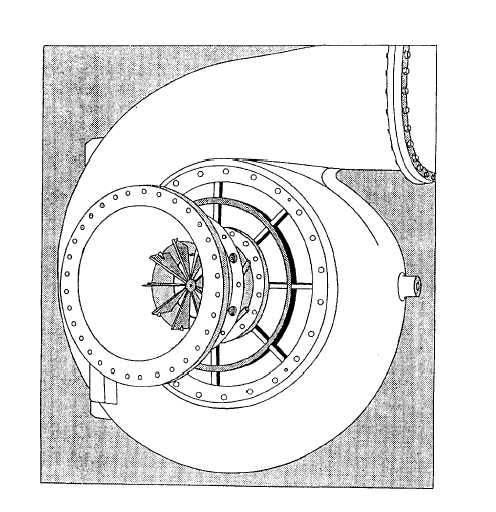The load on the air-conditioning plant is determined
by the desired chilled water temperature. The
compressor load is changed by either an increased or
decreased demand of the chilled water temperature.
Upon demand, the load is changed by the use of
adjustable prerotation vanes. The vanes are located on
the suction side of the compressor. The vanes act as
dampers to increase or decrease the flow of refrigerant
vapor into the suction of the compressor. This throttling
action at the compressor suction allows an increase or
decrease of the capacity of the compressor without
changing the compressor speed.
Figure 10-19 shows a centrifugal compressor with
the inlet piping removed. Note that the prerotation vanes
are in the fully open position. The vane position is
normally controlled automatically through an
electropneumatic control system. The control system
senses and maintains the chilled water outlet
temperature of the chiller at a preset value by varying
the position of the vanes.
In some plants, the electric motor used In some
plants, the electric motoerrive the compressor is
hermetically sealed and is cooled by a flow of refrigerant
through it. The compressor is lubricated by a force-feed
lubrication system. This system normally consists of an
auxiliary oil pump, an attached oil pump (integral with
compressor), an oil cooler, and a set of oil filters. The
auxiliary oil pump is used for starting and securing the
plant.
Several automatic controls are built into the
centrifugal compressor control system. These devices
increase the self-operating ability of the plant by
automatically shutting down the compressor if a
hazardous condition develops. Some of these conditions
are high condenser pressure, low compressor lube oil
pressure, seawater loss to the condenser, loss of chilled
water, low refrigerant temperature, low chilled
temperature, and high discharge temperature.
water
Figure 10-19.-Suction end of a centrifugal compressor showing prerotation vanes.
10-21


